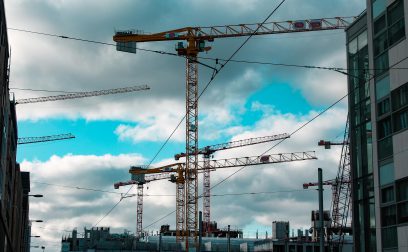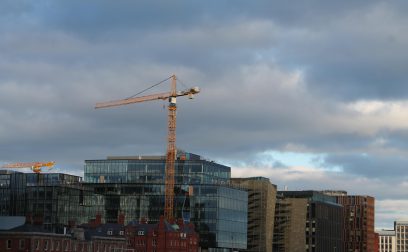The construction industry looks forward to the festive season, starting mostly from late December to early January because of “Tools Down” or the shutdown period where everyone gets to take a break and enjoy the festivities ahead. Most of the time, projects are halted and resumed after the season ends. Here’s how the process goes:
Counting Days
What superintendents, principals, and contractors find challenging during this time is the counting days – both in planning and accounting. Counting days is needed for several reasons including:
- Arranging ongoing projects for completion as per the construction guidelines
- Deploying some subcontractors and ideal personnel to work on the project while on the break and securing the construction site
- Submitting invoices and payment claims and scheduling responses when necessary
- Catering to extension delays and requests
If you happen to have a construction project that falls during this season, you have to plan before the shutdown period. You also have to consider an additional timeframe as leeway for when you might need more time to secure a site. You’ll have to include the closing and reopening of the site during and after this period. During this time, you also have to follow certain legislative requirements and some contractual arrangements as part of the preparation.
Payment
Securing Payments
During the shutdown period, it’s historically known that attempts to “ambush” construction parties with statutory payment notifications or even adjudication applications under the Security of Payment Legislation are made.
Scenarios like missed due dates from the lack of response because of the festive season commonly occur during this time. The personnel handling the inner workings of the project may not be available, thus hampering the whole process. This is even more problematic when due dates and responses that fall under the Security of Payment Regime are rigid and follow a strict code.
That’s why the parties involved in this process should meticulously check the due dates and schedule when to respond before the shutdown period – this includes replying to correspondences, invoices, notices, and progress claims.
In some jurisdictions, they have what they call a “blackout period,” when the parties involved will only have one thing to do – scheduling response dates thoroughly. However, every state varies from one another, so this should be considered and followed accordingly as well.
Minimizing Risks
Fortunately, apart from following state rules, there are simple tips you can follow to minimize the risk of missing a statutory Security of Payment:
- As simple as having someone monitor all of the processes will go a long way in minimizing these risks. Let personnel check emails, notices, fax, and online documents before the shutdown period.
- Have one dedicated team tasked to respond to these notifications, especially personnel who are responsible to track possible adjudications and Security Payment claims over this period. In this way, you’re ensured that someone can take action while everyone is gone for the break.
- Your assigned personnel should also calculate and deal with payment schedules. These processes must be acknowledged on time to prevent things from escalating. Make sure to also let your personnel know about your state territory and legislative rules.
- You can also have systems deployed for when your personnel can’t manually work on these procedures. This is especially helpful when there’s no one to delegate the work to during the break. These systems can assist with monitoring any payment notification and adjudication applications made during the festive season.
Invoices at the End of the Year
There’s another essential part to consider during this time, and that’s checking how payments should be addressed. The security of payment legislation has its payment requirements, but it should also be in line with the contract though the legislation will take precedence in most cases.
Still, you have to be certain that all parties are on the same page when it comes to payments. There are times when payments are required at the end of the month, but what happens when the shutdown period begins? Will you be liable even if this is a festive time and everyone is on break?
That’s why it’s important that contractual interpretation is discussed and that all parties involved reach an agreement during this time. To give you more helpful tips, consider the following as well:
- While it’s essential to take note of the Security of Payment legislation, know what the parties are referring to the payment days. The contractual definition of “business days” is what’s often followed, so don’t just assume but clearly discuss what’s implied here.
- If “business days” is mentioned, ask if this includes local holidays and the shutdown period too.
- If a project must be completed on a non-business day, clarify and mention that the project will be completed on the next business day. All parties involved must have an agreement in relation to this.
There are multiple scenarios where projects were halted and escalated due to a failed completion date because of a misunderstanding. Remember, contracts vary from one another, so notice periods will be affected in ways that are different from one construction project to the next. Terms such as “business days,” are just some of the factors that affect this process. That’s why contracts should be thoroughly read and drafted meticulously to ensure that the timeframes are clear and understood.
Contractual Shutdown Periods
Care of Works
During the shutdown period, you also have to see who is responsible for the security and care of the work because not everyone would be around during this time. So, in every contract, a review should be made before the shutdown time to confirm which group or personnel is tasked to oversee the site.
Most of the time, the risk would fall on a contractor, so this should be taken seriously to prevent any escalations from happening. Risks may happen on sites that are not secured well. That’s why everything should be clear on who is appointed to make the arrangements during this timeframe.
Uncontrollable factors like weather conditions and natural disasters should be taken into account at all times, but most especially during shutdown periods. Preparations to secure the site should be done to anticipate any weather events that may drastically affect the area. In this way, your team can reduce costs from insurance claims, additional costs or fees, delays, and other issues due to natural disasters.
Time Extensions
In most cases, the contractors are the ones expected to account for this period in their projects. Even if a contract may allow instances like delays due to unforeseeable cases, the shutdown period will most likely not fall in this category since this is an expected time that happens every year.
However, this can still be deemed accepted once the parties’ contract requirements are discussed, and if it’s agreed that the contractor is entitled to a time extension. That’s why contractors must ask what the contract entails when it comes to the shutdown period.
Supply Chain Delays
The last one to consider is the supply chain delays during shutdown periods. One prime example that is relevant recently is the pandemic years. During the peak of COVID-19, a lot of businesses stopped. There was a shortage of materials and skills that impacted the global market. This pause is just like what this industry experiences as well– although not as debilitating but just as similar.
Because of this shortage, you should have a shutdown period guide that you can follow to ensure that you know the supply and labor arrangements needed during this time. It’s a crucial element because it can greatly affect the overall status of your project. Thus, plan accordingly and make the necessary arrangements to prepare for this anticipated long break.








 yet? Register here!
yet? Register here!